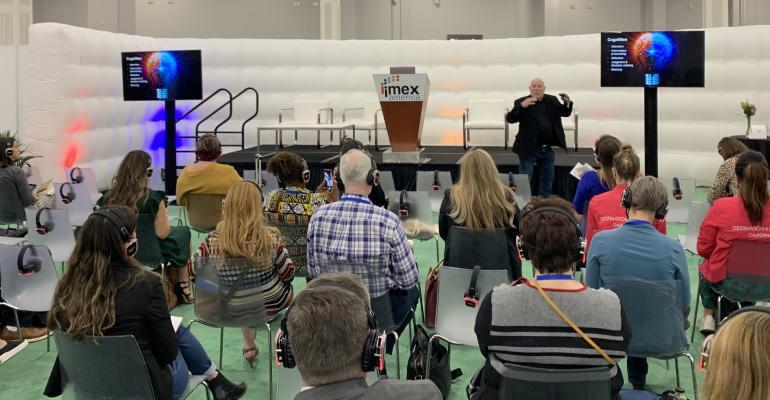Easy. Attractive. Personalized. Timely. Social.
Greg Bogue, chief brand and experience officer for Maritz Global Events, sees those five attributes as critical to effective communication with potential event attendees.
In a session titled “Communication Hacks: Lessons from Behavioral Science” at the 2021 IMEX America conference, Bogue made use of research from his firm as well as other sources that studied how people respond to different types of messaging and calls to action related to meetings and events.
Here’s why each element produces effective attendee-focused communications:
Easy. Bogue noted that breaking through the daily blizzard of email and online ads requires that event organizers simplify the choices potential attendees must make, and the process for responding to a call to action. “Having too many possibilities overwhelms people,” Bogue told the IMEX audience. “For whatever action you want attendees to take, only give them a few choices on what they can do.”
Also, “giving people simple processes for how to do things” such as registering and providing their event objectives and preferences “will result in more people taking action,” Bogue said. He also recommends opting people in for certain event elements ahead of time but explaining how they can easily opt out.
Attractive. In short, images work better than text. In particular, infographics in pre-event communications and on the show floor are more quickly understood by attendees. “Images require less cognitive effort and can elicit emotion,” Bogue said—especially when combining those images with just a single word or a short phrase. The images can be used to educate attendees on certain aspects of the meeting, convey instructions on how to navigate the event app or another event element, or act as a call to action for something that will help provide a better attendee experience, a prize or gift, or some other benefit.
Personalized. Bogue noted that simply using recipients’ names in the subject lines of emails raises the open rate by 10 to 30 percent. Further, if you can show how an attendee’s status in their professional community will be enhanced through the event, people will respond. “They not only want to belong—they want to show others that they belong,” he said.
Timely. Sending offers and other communications at the right times—based on research into how each channel tends to be used—will maximize the impact of the message. What’s more, planners can use “pseudo-developments” to deliver the latest message: “a revamp/fresh start,” “new research/information,” or “new and improved” are ways to gain attention amid the daily flood of emails and social-media messages people receive.
Social. You can influence the behavior of potential attendees by showing what others are thinking and how they are acting—and that the time frame or number of spots is becoming limited. “Show the demand while emphasizing scarcity, and you’ll see activity,” said Bogue. “Tell people what are the most popular opinions and sentiments, event elements, and community behaviors you’re seeing as the deadline for action nears. That creates social pressure” while also reinforcing that your organization taps deeply into that community.





